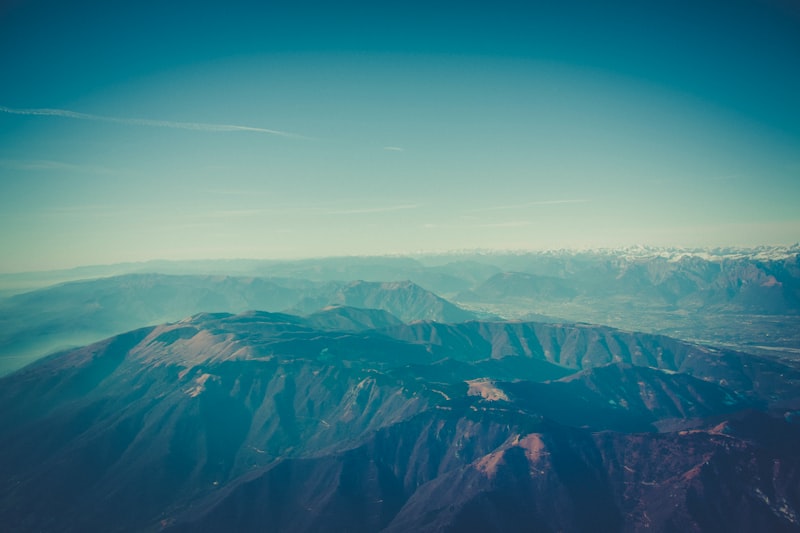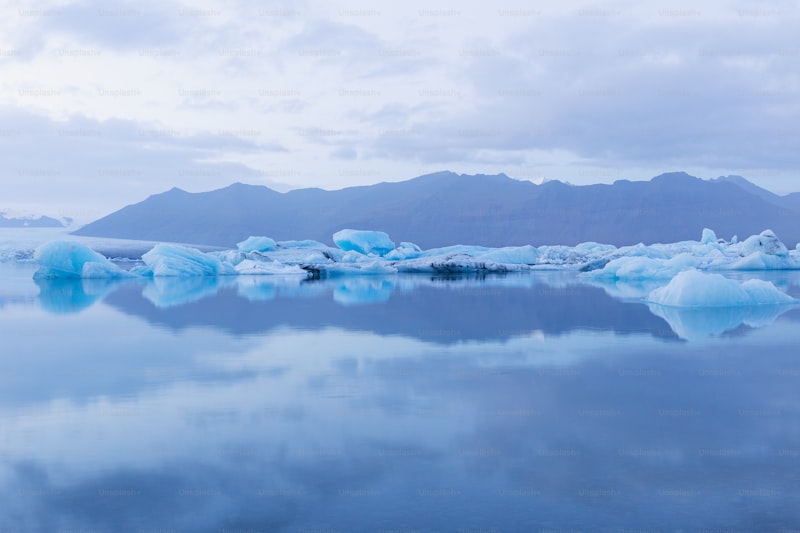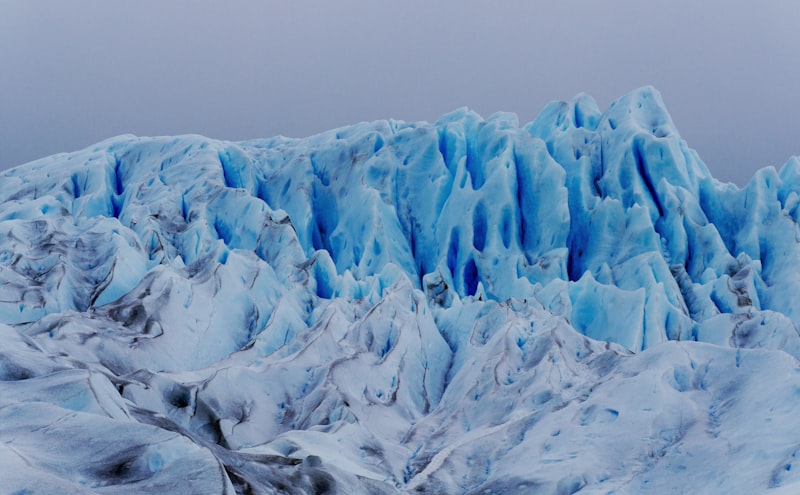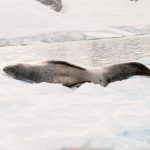Glaciers, like frozen rivers, flow imperceptibly yet exert an immense force on the landscape. Over millennia, they sculpt valleys and fjords with precision, creating landscapes that seem almost surreal. Each crevasse and icefall tells a story of perseverance and change, echoing the silent dance between ice and rock.
One of the most awe-inspiring aspects of glacier landscapes is their sheer scale. Picture towering ice walls that stretch for miles, their crystalline blue hues contrasting against stark white snowfields. These icy giants seem to defy both time and gravity, standing as monuments to the Earth’s ancient past.
Beyond their visual allure, glaciers play a crucial role in our planet’s ecosystem. They act as freshwater reservoirs, feeding rivers and lakes with pristine meltwater that sustains life downstream. Their presence is not just scenic but essential, contributing to global climate regulation and biodiversity.
Exploring these frozen realms is like stepping into a surreal painting where every turn reveals a new marvel. From ice caves that shimmer like crystal cathedrals to seracs that tower like frozen skyscrapers, the diversity of glacier formations is as staggering as it is captivating.
Yet, these landscapes are fragile. As climate change accelerates, glaciers worldwide are retreating at an alarming rate, altering landscapes and ecosystems in ways we are only beginning to understand. The urgency to preserve these natural wonders has never been greater, underscoring their role not just as scenic wonders but as vital indicators of our planet’s health.
In the end, standing before a glacier landscape is to witness nature’s raw power and delicate balance. It’s a reminder that while these icy realms may appear timeless, they are also incredibly vulnerable. Each visit to a glacier is a testament to both its majesty and its fragility, inviting us to marvel, reflect, and above all, protect these irreplaceable wonders of our world.
Frozen Giants: Exploring the Beauty and Science Behind Glacier Landscapes
Glacier landscapes, often referred to as “frozen giants,” captivate our imagination with their immense beauty and profound scientific significance. These majestic formations of ice stand as timeless monuments to the Earth’s history, shaping landscapes over millennia.
Glaciers, like colossal rivers of ice, slowly carve their way through mountains, valleys, and plains, leaving behind breathtaking scenery etched with their movement. The sight of a glacier is awe-inspiring, with its icy blue hues and jagged crevasses that tell stories of the planet’s ancient past.
But glaciers are more than just picturesque marvels; they play a crucial role in regulating global climate and supporting diverse ecosystems. As they advance and retreat, glaciers affect weather patterns and sea levels, influencing the Earth’s delicate balance.
Scientists study glaciers to unravel the mysteries of climate change and understand our planet’s evolution. By analyzing ice cores, researchers can peer into the past, uncovering clues about ancient climates and atmospheric conditions.
Visiting a glacier is like stepping into a frozen world where time seems suspended. The air is crisp, and the silence is profound, broken only by the occasional crack of shifting ice. Walking on a glacier offers a visceral experience of nature’s power and resilience.

Each glacier has its own unique characteristics, shaped by local climate and geography. Some are nestled high in mountain ranges, while others flow down into valleys, creating spectacular fjords and lakes. Each one tells a story of its journey through time, leaving behind a legacy etched in ice.

Exploring glacier landscapes isn’t just about admiring their beauty; it’s about understanding our planet’s history and future. As these frozen giants continue to melt at alarming rates due to climate change, their importance grows even more urgent. Preserving glaciers means safeguarding not just natural beauty but also invaluable scientific records of our planet’s past.
Glacier landscapes are not merely frozen expanses of ice; they are living archives of Earth’s history and crucial indicators of our future. By exploring and appreciating these majestic wonders, we gain a deeper understanding of our planet’s interconnectedness and the importance of protecting its natural heritage.
A Journey Through Ice: Capturing the Majesty of Glacier Landscapes
As you traverse these frozen expanses, each step reveals a new facet of their grandeur. The crunch of snow beneath your boots echoes through the pristine air, while the sunlight dances upon the ice, creating a spectacle of light and shadow. It’s a sensory experience unlike any other, where the silence is punctuated only by the occasional creaking of ancient ice shifting under its own weight.
Glacier landscapes are not merely static entities but dynamic ecosystems teeming with life. Despite their harsh conditions, these icy realms harbor a surprising array of flora and fauna adapted to thrive in this extreme environment. From resilient mosses clinging to rocky outcrops to elusive mountain goats scaling sheer cliffs, every living organism here plays a crucial role in the delicate balance of nature.
Moreover, glaciers are vital reservoirs of freshwater, feeding rivers and lakes that sustain countless communities downstream. Their slow, steady movement shapes the landscapes around them, carving valleys and fjords that bear witness to their enduring influence. Indeed, the majesty of glacier landscapes lies not only in their physical presence but also in the profound impact they have on our planet’s ecosystem and climate.
Exploring glacier landscapes is more than just a visual journey—it’s a deep dive into the heart of Earth’s natural history and environmental significance. It’s a reminder of our planet’s remarkable diversity and resilience in the face of adversity. So, whether you’re a seasoned adventurer or a curious explorer, embarking on a journey through ice promises to be an unforgettable experience, leaving you with memories as enduring as the glaciers themselves.
Glacial Symphony: The Stunning Visuals and Sounds of Glacier Landscapes
Picture yourself surrounded by vast expanses of ice, each glacier unique in its shape and movement. Some glaciers appear serene, their surfaces smooth and almost ethereal, reflecting shades of blue that defy description. Others are more active, with crevasses that yawn like deep chasms and icefalls that cascade with a thunderous roar.
The soundscape of a glacier is equally mesmerizing. As sunlight warms the ice, you might hear the gentle trickle of meltwater, a reminder of the constant transformation these landscapes undergo. Yet, amidst this tranquility, there are moments of drama—a sudden crack as ice shifts, or the boom of a calving event, where massive chunks break away and crash into the sea below.
These natural spectacles not only evoke awe but also serve as crucial indicators of our planet’s health. Glaciers, often referred to as Earth’s ‘rivers of ice’, play a vital role in regulating global climate and sustaining ecosystems. Their gradual retreat due to climate change is a poignant reminder of our planet’s fragility and the urgent need for environmental stewardship.
Visiting a glacier is more than just witnessing a marvel of nature; it’s an opportunity to connect with Earth’s history and future. Each crack and groan, each shimmering surface, tells a story of resilience and adaptation. It’s a reminder that while glaciers may seem timeless, they are also vulnerable to the forces shaping our world today.
So, next time you stand before a glacier, take a moment to soak in its symphony of sights and sounds. Let yourself be awed by its beauty and humbled by its power—a true masterpiece of nature’s artistry.
Nature’s Ice Sculptures: Unveiling the Unique Shapes of Glacier Landscapes
Glaciers, like colossal frozen rivers, carve their way through landscapes over centuries, leaving behind breathtaking sculptures of ice that captivate the imagination. These natural formations, often referred to as “nature’s ice sculptures,” are renowned for their immense beauty and unique shapes, each telling a story of the Earth’s ancient past.
Imagine standing before a glacier, its icy façade glistening under the sun, and marveling at the sheer size and intricate details of its structure. These icy giants hold within them a history written in layers of snow and ice, preserving records of climate change and environmental shifts over millennia.
One of the most mesmerizing aspects of glacier landscapes is their ability to form distinct shapes that seem almost sculpted by an otherworldly artist. From towering spires to delicate arches, each formation is a testament to the slow yet relentless movement of ice across the land. Picture the serene beauty of an ice cave, formed by the gradual melting and refreezing of glacial ice, creating ethereal blue hues that seem to glow from within.

Glaciers also create majestic icebergs when they calve into the sea, releasing massive chunks of ice that float like floating sculptures, each with its own unique shape and size. These icebergs, often towering and imposing, drift with ocean currents, eventually melting away or grounding on shorelines, where they continue to reshape the coastal landscapes.
The colors of glacier ice are another wonder to behold. The deep blue hues, caused by compressed ice absorbing all colors of the spectrum except blue, create a surreal and almost magical atmosphere around these frozen giants. This phenomenon is especially pronounced in glaciers where the ice has been compacted over centuries, filtering out other wavelengths of light.
Exploring glacier landscapes is not only an awe-inspiring experience but also a reminder of the fragility of our planet’s ice-covered regions. As climate change accelerates, these natural wonders face unprecedented challenges, with many glaciers retreating at alarming rates. Preserving these majestic ice sculptures is not just about protecting their beauty but also about safeguarding the delicate ecosystems that depend on them.
Nature’s ice sculptures, with their unique shapes and profound beauty, continue to inspire awe and reverence among those fortunate enough to witness them firsthand. Each visit to these frozen landscapes offers a glimpse into a world shaped by the forces of nature, where ice becomes art and time is etched in layers of blue and white.
Frequently Asked Questions
How do glaciers affect local ecosystems and wildlife?
Learn how glaciers impact local ecosystems and wildlife, exploring their role in shaping habitats, influencing water sources, and providing unique environments for diverse species.
What are some famous glacier landscapes around the world?
Discover famous glacier landscapes around the world, from the stunning Perito Moreno Glacier in Argentina to Iceland’s expansive Vatnajökull Glacier. Explore natural wonders like Alaska’s Hubbard Glacier and Switzerland’s Aletsch Glacier, offering breathtaking views and unique experiences.
How do scientists study the movement and behavior of glaciers?
Discover how scientists study glacier movement and behavior using advanced techniques like satellite imaging, ground-penetrating radar, and GPS tracking. By analyzing data collected from these methods, scientists can understand changes in glaciers over time and their impact on the environment.
What causes glaciers to form and shape landscapes?
Discover the factors behind glacier formation and their impact on shaping landscapes. Learn about the geological processes, erosion, and deposition that glaciers contribute to, influencing the terrain over millennia.
What are the environmental impacts of glacier melting on global climate?
Learn about how glacier melting impacts global climate, including sea level rise, altered ocean currents, and changes in weather patterns. Understand the broader implications for ecosystems and human populations worldwide.


